Use up and down arrows to select available result. Press enter to go to selected search result. Touch devices users can use touch and swipe gestures.
We sell, repair, calibrate & rent scales

Load Cells are available at Central Carolina Scale. We have a wide range of custom and stock loadcells, platform scales, and floor scales for your weighing needs. We offer brands like Rice Lake, Cardinal, Sensortronics, Artech, Zemic, HBM, Revere Transducers, Transcell Technology, & Tedea Huntleigh. We also provide weighing assemblies used in tank weighing and batching systems and bulk weighing applications. With over 30,000 quality items available in stock, nobody offers faster, more reliable service. Portions of this are courtesy of Paul Menge, Loadcell Manager at Rice Lake Weighing Systems.
S-Beam
S-Beam get their name from their "s" or "z" shape. S-Beam provide an output under tension pull. Applications for S Beams include hanging, tank level, hoppers and truck scales. S-beam load cell are typically used when hanging or suspending a weighing system (used in S-beam tension). Every now and then somebody will refer to these as z beam load cells. Since only half of this cell is live while the other half is inert, it is important to ensure that it is properly positioned. A simple way to distinguish the top from the bottom of the cell is to look at which side the cable protrudes. Central Carolina Scale often uses the Sensortronics 60001 or the Artech 20210 cell. This side is inert and should be placed in the upward position to avoid any weight discrepancies associated with the cable.
Bending Beam
Used in tank weighing and industrial process control. Bending Beam feature low profile construction for integration. Single End or Double End Beam available. Shear beam load cells are typically manufactured in capacities of 500 pounds and higher. These load cells have an actual “shear” machined inside to protect the cell from side loading forces. Central Carolina Scale technicians will often use the Revere Transducers 5123 single end beam load cell or the Revere 9103 double end beam. Bending beam load cells are typically found in bench scales and are of lighter capacity.
Compression
Compression load cells a lot of times have an integral button design. Compression loadcells are ideal for mounting where space is restricted. Some choices we typically recommend are the Celtron LOC or the Rice Lake RL90000.
Single Point
Single point are commonly used in commercial and industrial weighing systems along with small to mid size bench platforms. Good choices include the Tedea Huntleigh 1042 and Tedea 1250. We also recommend the Rice Lake RL1042 and RL1250.
Canister
Canister cells are commonly used for single and multi-weighing applications. Canister load cells were the first type of strain gauge load cell. All other types of strain gauge load cells have evolved over the years from that original canister design. Today, canister type load cells are used for weighing systems in excess of 200,000 pounds per cell. That being said, today there are double-ended shear beam load cells that are available in capacities up to 200,000 pounds as well. Using a double-ended shear beam in a load cell mount eliminates the need for checking, thus eliminating added cost associated with a canister cell used in the same application. Most canister load cells are sold as replacement cells for older systems. Some choices we typically recommend are the Cardinal AC-50k (replacement for SCA-50K) or the Revere Transducers CP series.
Hydrostatic
Hydraulic Load Cells are also available for truck scales made by Cardinal Scale and Emery Winslow.
FOUR QUESTIONS TO CONSIDER
1. What will the load cells be exposed to in their normal operational function?
2. Will the cell be exposed to dry, wet or airborne chemicals?
3. If chemicals are present, what are they?
4. Will the cell be exposed to washdown cleaning, humid or occasional submersion conditions?
If the answer is yes to any of these questions, further investigation needs to be done.
Load cells are constructed from three different materials:
Tool Steel (alloy steel)
Aluminum
Stainless Steel
Tool steel elements are by far the most popular load cells used today. The cost-to-performance ratio is better, compared to other materials used in load cell construction. The most popular alloy used is 4330. Tool steel load cells are relatively inexpensive, have a large capacity range and are best used in dry applications.
Aluminum is primarily used in single point, low capacity applications. The aluminum of choice is 2023 because of low creep and hysteresis. Aluminum is the least expensive of the three materials used to manufacture load cells. Aluminum load cells are limited by their low capacity range and should not be exposed to wet or chemical conditions.
The third material used for load cell manufacturing is stainless steel. The stainless alloy used is 17-4 ph. This alloy has the best overall performance of any of the stainless derivatives. Stainless steel load cells are more expensive than tool steel or aluminum, but their resistance to corrosion makes them an ideal choice in wet or corrosive applications.
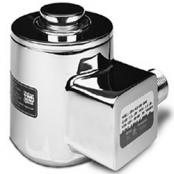

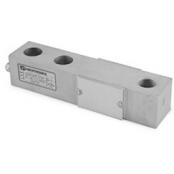
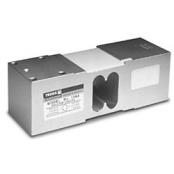
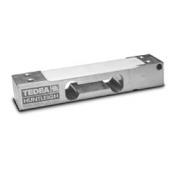
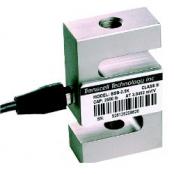
Another important item to consider when designing a weighing system is how the load cell’s internal components are protected from the environment.
“Environmentally sealed” is used to describe several techniques, but ultimately is accomplished by one or more of the following: Rubber “boots”, glued on covers or potting the gauge cavity of the load cell. This type of sealing will protect the load cell from damage caused by dust and debris and moderate humidity caused by splashing of water. In no way will the load cell be protected from immersion under water or being exposed to pressure cleaning.
Another sealing technique used on load cells is “hermetically sealed.” This incorporates a welded cover or sleeve that encapsulates the gauge pocket. The cable entry area also uses a welded barrier to prevent moisture from “wicking” into the load cell, and shorting it out. This technique is generally used with stainless steel load cells as a stainless, hermetically sealed load cell should only be used in heavy wash down or chemical applications. This makes for a more expensive load cell but if long life in a hostile environment is desired, this is the most cost effective solution in the long run.
A “welded sealed” load cell is identical to a hermetically sealed cell, with the exception of where the load cell cable comes out. A welded sealed cell typically has the same load cell cable attachment as the environmentally sealed cell. In some instances, the welded sealed cell may have a conduit adapter for the load cell cable, affording some level of protection. While the gauge area itself is protected by the welded seal, the cable entry is not. Welded sealed load cells are for use where the cell may get wet on occasion, but are not intended for heavy wash down applications.
Above we mentioned hermetically sealed load cells. In the weighing industry the most common technology used is strain gauge load cells. Strain gauges are very sensitive and need to be protected against moisture, chemicals, and mechanical damage. Many people believe that all load cells made from stainless steel are protected, but this is not true. To obtain the ultimate degree of moisture protection, the load cell must be stainless steel and hermetically sealed. Hermetic sealing will ensure the integrity of the strain gauge section of the cell in corrosive or washdown applications.
Select the Right Equipment for the Job
The success or failure of any electronic weighing system ultimately lies with selecting the correct equipment. An important aspect of choosing the correct load cell is to make sure that the load cell is properly sealed for the environment where it will be used. If the environment is wet, has high humidity, or the load cells will be washed down, the only choice that should be considered is a hermetically sealed stainless steel load cell.
The Difference is in the Seal
The only difference between a tool steel and a stainless steel load cell is the element material used. The method of sealing these load cells is the same. Only the sealing process of a true hermetic seal will prevent moisture from entering the load cell. An environmentally sealed load cell entails potting the cavity where the strain gauges are installed, covering that potting with a plate that is glued in place, and using washers and o-rings where the load cell cable enters the body of the load cell. A true hermetically sealed load cell incorporates a cover over the gauge cavity that is welded in place and a welded header where the cable is attached. This welded header is the key. Some stainless steel load cells offer a welded cover over the gauge area but do not incorporate the welded cable header. Although the welded cover provides some protection of the strain gauges, moisture can still enter the load cell through the cable entry area and damage the load cell.
Worth the Investment
Hermetically sealed, stainless steel load cells are made from 17-4PH, which offers the best performance qualities of any stainless alloy. Stainless steel has a higher resistance to moisture and chemical corrosion than tool steel or aluminum.
Hermetically sealed, stainless steel load cells are more expensive than other load cells due to the additional costs of sealing the load cell.
If a non-hermetic cell is used in a washdown application and the cell is replaced several times due to failure from moisture, the cost is much greater than using a hermetically sealed load cell initially.
OTHER FACTORS TO CONSIDER
It is important to know what the resolution of the weighing system is in order to select the right capacity cells while attaining the desired sensitivity (readability). Simply stated, resolution equals scale system capacity divided by sensitivity. For example, a 5,000 pound floor scale reads in 1 pound increments and has a stated resolution of 1:5,000 (5,000 pounds divided by 1 pound). If that same 5,000 pound system needed to display the weight in .5 pound increments, the scale’s resolution would change to 1:10,000 (5,000 divided by .5). This is important because as the resolution gets higher, the actual millivolt output per division gets smaller. The smaller each millivolt reading, the more difficult it is to detect small changes in weight. A scale system with a resolution of 1:5,000 would have a .006 mV per division change (30 mv divided by 5,000 divisions). That same system with a resolution of 1:10,000 would have a .003 mV per division change.
The number of load cells used in a weighing system also needs to be considered. When designing a weigh hopper system, it is preferable to use a three load cell system rather than four or more load cells. This is because a three cell system has the weight perfectly distributed on each load cell. When using four or more cells, it is vital to ensure that all cells are on the exact same plane in order to properly weigh.
